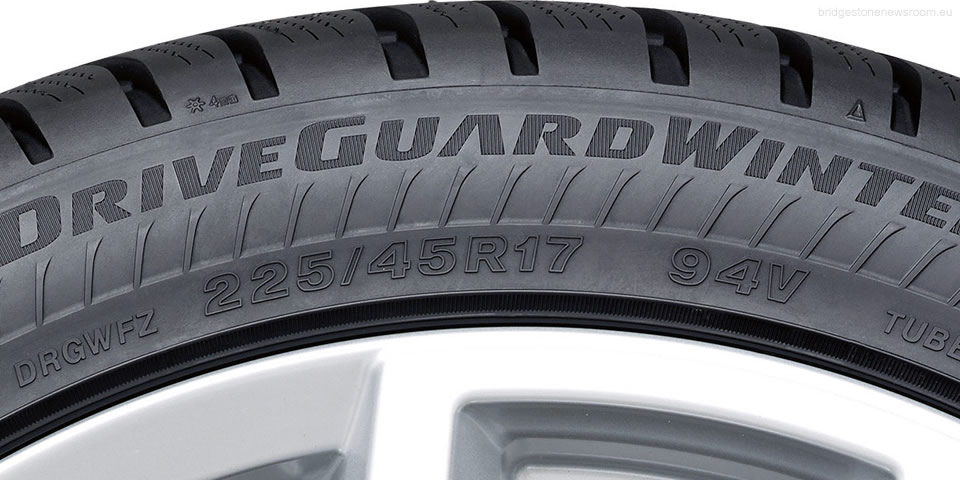Tire markings: Discover tire size, weight and more!
Seaching for tire size, speed index and weight max? We clarify: Follow this post and understand all tire markings recorded in your car tires!

The tires have differences, but their main characteristics are writed on the side. Numbers/acronyms recorded on vehicle tires bring important information to the owner, including tire size and dimensions. Want to understand what those numbers mean? Follow this post and understand all tire markings!
The tire markings
The codes (combinations of letters and numbers) printed on the sides of the tires are used to identify the product. These codes include, for example, tire measurements, type of construction, performance characteristics and even tire limits such as the maximum speed and weight of the vehicle.

Must Read:
- What Does 91w Mean on a Tire
- Are Run-Flat Tires Repairable?
- Are All Season Tires as Good as Winter Tires?
- Run flat tire can be repaired? It depends!
- Are Fullway Tire Brand Good and Safe?
You may have noticed that this tire labeling is standardized between different brands. Although easy to identify the product, only some information of this mark is readable, and the others codified in several ways.
To avoid problems, especially when buying a new set of tires, it is good to understand what these numbers represent.
How to know the size of the tire?
Information about tire size is represented by a combination of letters and numbers, something like 225/45 R17. If you do not know how this means the size of the tire, let’s explain how it works. The measurement consists of presenting the width, profile and rim.

Let’s see what code 225 / 45R17 94V means:
225: Corresponds to the width of the tire, in millimeters. In the example, the tire is 225mm wide. Some tires have a letter, before that number (for example, P225). The letter is optional, and indicates which type of vehicle the tire is indicated. The letter P, for example, indicates that the tire is for passenger cars; LT stands for light trucks.
45: It is the tire series, the relationship between the height of the side and the width of the tire. In our example, the flank height corresponds to 45% of the width of the tire. The lower the tire lift, the lower the height of the side. This ratio varies according to the tire model. A tip: The smaller the height of the flank, the better the adhesion in the curves; however driving is less comfortable.
R: Indicates tire construction. R indicates that the construction is “radial”. Almost all tires today are radial.
17: This is the inner diameter of the tire, in other words, the diameter of the rim. This diameter is indicated in inches. In our example, the tire diameter is 17 inches. So, you already know the two important values that will be crucial in choosing the correct rim size for the tire.
94: Value corresponding to the weight index. It brings the maximum weight that the tire can withstand when under normal conditions and properly calibrated. In the image above, it does not mean that the tire supports 94kg, but the index is 94. A tire with a weight index of 94 can carry 750kg. In order to know the maximum weight of this tire, it is necessary to consult the table of weight in kg for each index. See below:
| Weight Index | Max Weight by Tire (Kg) |
|---|---|
| 65 | 290 |
| 66 | 300 |
| 67 | 307 |
| 68 | 315 |
| 69 | 325 |
| 70 | 335 |
| 71 | 345 |
| 72 | 355 |
| 73 | 365 |
| 74 | 375 |
| 75 | 387 |
| 76 | 400 |
| 77 | 412 |
| 78 | 425 |
| 79 | 437 |
| 80 | 450 |
| 81 | 462 |
| 82 | 475 |
| 83 | 487 |
| 84 | 500 |
| 85 | 515 |
| 86 | 530 |
| 87 | 545 |
| 88 | 560 |
| 89 | 580 |
| 90 | 600 |
| 61 | 615 |
| 92 | 630 |
| 93 | 650 |
| 94 | 670 |
| 95 | 690 |
| 96 | 710 |
| 97 | 730 |
| 98 | 750 |
| 99 | 775 |
| 100 | 800 |
| 101 | 825 |
| 102 | 850 |
| 103 | 875 |
| 104 | 900 |
| 105 | 925 |
| 106 | 950 |
| 107 | 975 |
| 108 | 1000 |
| 109 | 1030 |
| 110 | 1060 |
| 111 | 1090 |
| 112 | 1120 |
| 113 | 1150 |
| 114 | 1180 |
| 115 | 1215 |
| 116 | 1250 |
| 117 | 1285 |
| 118 | 1320 |
| 119 | 1360 |
| 120 | 1400 |
| 121 | 1450 |
| 122 | 1500 |
| 123 | 1550 |
| 124 | 1600 |
V: This is the speed index, it informs the maximum speed that this tire supports of safe form. Speed indexes range from A (the lowest) to Y (the highest). The exception is H, situated between U and V. Like the weight index, each letter corresponds to an equivalent value in km / h, according to the table.
| Speed Index | Max Speed |
|---|---|
| Q | 160 km/h |
| R | 170 km/h |
| S | 180 km/h |
| T | 190 km/h |
| H | 210 km/h |
| V | 240 km/h |
| ZR | > 240 km/h |
| W | 270 km/h |
| Y | 300 km/h |
Other important tire markings
There is other interesting information about the product in the tire markings, such as its manufacturing date and safety.
DOT Number
Many recommend paying attention to the DOT number when purchasing the tire. It brings the date of manufacture of the product. The US government requires manufacturers to report when the tires were manufactured, and this requirement originated the DOT code. DOT are the initials of “Department of Transportation”.

The DOT code consists of a sequence of numbers and letters, each referring to specific information such as tire mark and place of manufacture.
But let’s look at the last four digits of the code. The first two indicate the number of the week of the year that the tire was produced. The last two digits indicate year of manufacture.
So the “1412” example from the DOT code end of the image above means that the tire was produced in the 14th week of 2012.
Now we know why it is important to check the DOT. Knowing how to interpret it, you can evaluate the tire’s storage time before buying it.
Experts do not recommend buying tires with more than 5 years of manufacturing. Even if the tire has not been used yet, it may have been stored incorrectly, making it unsafe.
Treadwear: What is it?
Imagine the following: You are in doubt if you buy the brand A tire and the brand B tire. What if you could know which one will last longer? The treadwear index answers your question!
Treadwear is the durability index of the tire, ranging from 60 to 700. It allows you to compare the durability of competing tires: the treadwear 400 tire yields twice as much as the tire with treadwear 200.
The treadwear is another index, so a tire with treadwear 200 does not yield 200km.
Tip: Not always a tire that lasts longer is better, because the soft tire has more grip. It can last for less time, but offers better performance and security. It all depends on your style of driving, tire maintenance and condition of the streets you are traveling.

What is Traction?
This is the traction indicator of a tire, and corresponds to its grip on wet track. The higher the traction index, the lower the braking distance.
The index is entered with letters. The options are AA, A, B and C, with AA being the highest and C being the lowest.
What is Temperature?
It is the indicator of tire resistance to heating, and also the ability to dissipate heat. Tire calibration and loading should be considered. These values correspond to a tire inflated correctly – and without overcharging.
The index is shown by the letters A, B and C, where A is the best and C is the minimum.
Related topics
- how to read a tire markings
- how to read the tire numbers
- what does tire numbers mean
- how to know tire size
- What tire size?
- which means the tire references
- tire technical specifications
- what does tire numbers mean
- tire measures as understood
- tire measurements for cars
- how to identify a tire
- tire nomenclature
- table speed tires







